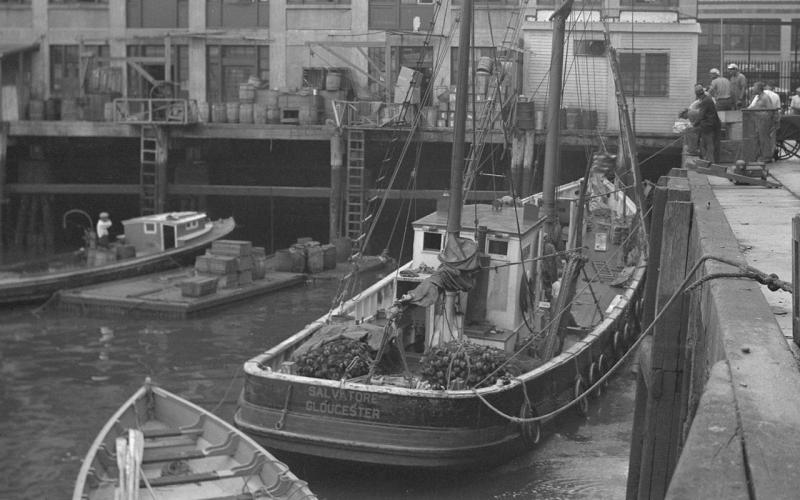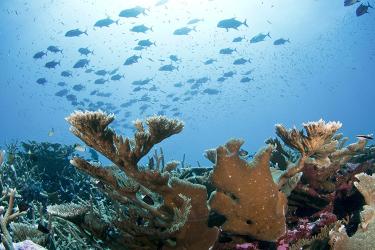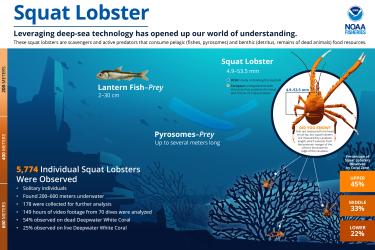The ocean and its diverse resources are an integral part of our country’s economy and national identity. U.S. fisheries generate $244 billion in sales and support more than 1.7 million jobs. The United States has more than 95,000 miles of coastline and 3 million square miles of open ocean—the second largest exclusive economic zone in the world. We are stewards of one of the richest environments on Earth. The federal government established our responsibility to safeguard this environment 150 years ago and it endures to this day.
In the Beginning
In 1871, President Ulysses S. Grant created the United States Commission of Fish and Fisheries—the first federal agency dedicated to natural resource conservation. The Commission initially focused on fisheries data collection and laboratory research to help manage a burgeoning seafood industry that supported many hard-working Americans.
The formation of the Commission marked an important milestone in our country’s regulatory history. It confirmed the fundamental value of our natural resources and established a mandate to preserve them. It also signaled a movement towards greater environmental and scientific awareness that would continue to grow through the 20th century.
The Commission evolved and underwent many changes before the establishment of NOAA Fisheries in 1970, but our original mission of conservation remained constant. Today, we uphold that mission by conducting world class science and research that supports sustainable fisheries, protects marine life, and maintains healthy habitats and ecosystems.
Turning the Corner for Fisheries Management
Our work would not be possible without the best-available research techniques and the best scientists, managers, analysts, and specialists from around the country and the world. With their expertise and the authority of the Magnuson-Stevens Act, we’ve turned the corner on rebuilding our national fisheries. We’ve significantly reduced the number of overfished stocks while supporting the growing aquaculture industry to supplement wild-caught fisheries.
Since 2000, we’ve rebuilt 47 stocks including many West Coast groundfish populations, which rebounded to new highs in 2018. We monitor population changes through annual surveys. Some surveys, like the California Cooperative Oceanic Fisheries Investigations and the Northeast bottom trawl and plankton surveys, are the longest-running surveys of their kind in the world.
One of our most important tasks is ensuring a fair playing field for all who participate in the U.S. seafood industry. In 2019, based on exceptional investigative work by our Office of Law Enforcement and others, NOAA settled its civil administrative claims against Carlos Rafael and his fishing captains. They were found guilty of violating federal fisheries regulations. We continue to monitor seafood safety through the Seafood Inspection Program and promote sustainable fishing practices internationally.
Protecting, Recovering, Discovering Marine Life
We’ve worked for nearly 50 years to protect threatened and endangered species under the Marine Mammal Protection Act and Endangered Species Act. Populations of harbor porpoises, gray whales, and Steller sea lions once faced major declines, but are thriving today. Our Species in the Spotlight campaign highlights nine endangered species in need of saving now. We’re doing everything within our power to ensure these species are protected so their numbers may recover.
At the same time, our scientists are discovering new species and using cutting-edge technology to uncover more about our mysterious oceans. In the last two years, we announced the discovery of a potential new killer whale species near Antarctica, a new baleen whale species in the Gulf of Mexico, and a new alien-like comb jelly in the deep trenches off Puerto Rico.
Cutting-Edge Science and Technology
New developments in science and technology allow us to examine the marine environment in ways never before possible. Updated genetic approaches can detect the presence of certain species based on traces of their DNA in the environment. Advancements in genomic sequencing enable us to more accurately describe and study species by looking at their unique genetic signatures.
In addition to uncrewed vehicles like ROVs and Saildrones, we use surveys, satellites, buoys, and models to monitor changes in ocean conditions. These technologies help us understand how warming waters and rising acidification might impact species distribution and health. This information is particularly important as we respond and adapt to climate change, and ensure that future generations can enjoy the benefits of healthy marine ecosystems.
Healthy Habitats and Healthy Ecosystems
Fish and marine life need healthy habitats to rest, feed, grow, reproduce, and even hide from predators. We protect these critical areas—like rivers, coral reefs, and wetlands—to prevent human impacts. In the last 30 years, we’ve restored more than 150,000 acres of habitat, allowing fish and other marine life to thrive. These projects also create jobs, and help protect coastal communities from storms.
In spite of all our successes, we’ve also faced immense challenges. In 2010, the Deepwater Horizon oil spill released approximately 134 million gallons of oil into the Gulf of Mexico. Our habitat conservation teams were at the forefront of the response and cleanup effort. More than 10 years later, we are still working with federal and Gulf state partners to restore and recover the Gulf of Mexico’s natural resources using the $20.8 billion settlement with BP.
Looking to the Future
The protection, conservation, and sustainable use of our ocean is a complex and continuing challenge that requires the collaboration of many partners and stakeholders. In 150 years, we’ve learned much about the ocean and what it has to offer us, but we’re always working to develop a greater understanding of our environment and our place in it.
Here’s to the future of NOAA Fisheries.
Paul Doremus
Acting Assistant Administrator for NOAA Fisheries






